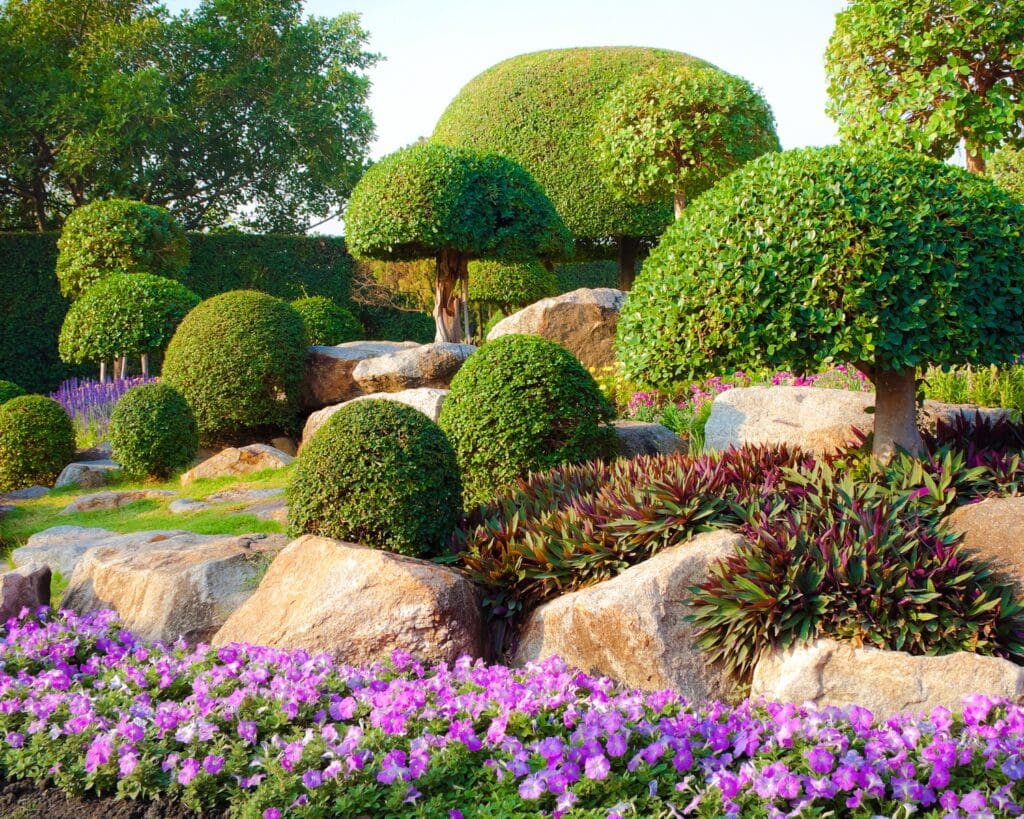
Knowing when to plant bushes is key to having a healthy, beautiful yard. You’re not alone if you’ve ever wondered how to get your shrubs to grow strong and thrive. Many homeowners ask us, “When can you plant shrubs?” or “What’s the best time to plant shrubs and trees?” At My Neighbor Services, we’ve helped homeowners with planting, care, and maintenance, and we’re here to share simple, practical tips to make the process easier for you.
The Importance of Timing In Bush and Shrub Planting
Planting bushes and shrubs at the right time gives them the best chance to grow strong roots and avoid stress. When the soil and weather conditions are just right, your plants will establish faster and grow better. Learn more about the best times to plant shrubs and bushes from Iowa State University Extension and Outreach.
When Is the Best Time to Plant Bushes?
- Spring: Early spring is a great time when to plant bushes because the weather is mild, and there’s enough time before the heat of summer.
- Fall: The answer to the question, “Is fall a good time to plant shrubs?”, is a resounding yes! Cooler temperatures and steady moisture help shrubs settle in before frost arrives.
10 Simple Tips for Successful Shrub Planting
We’ve designed these tips to be easy to follow so you can feel confident in your ability to create a thriving garden.
Choose the Right Spot
Pick a location with the right balance of sun and shade. Some bushes grow well in full sun, while others prefer partial shade. Check the plant’s label for guidance.
1. Prepare the Soil
Good soil is essential for healthy bushes. Mix in compost or organic matter to enhance the soil and improve drainage.
2. Dig the Right-Sized Planting Hole
The planting hole should be just as deep as the roots but around twice as wide as the root ball. This gives the shrub enough room to grow while keeping it stable.
3. Handle the Root Ball Gently
When you transfer the shrub, keep the root ball intact. This prevents damage and helps the shrub adjust to its new spot.
4. Water Thoroughly After Planting
Water the shrub deeply right after planting. During the first several months, this keeps the shrub hydrated and aids in the soil settling around the roots.
5. Use Mulch to Protect the Roots
Mulch helps retain moisture, controls weeds, and keeps the roots cool. Spread it around the base of the shrub but keep it a few inches away from the trunk.
6. Plant During Mild Weather
Do not plant during extreme weather, such as frost, heavy snow, or the peak heat of summer. These conditions can stress your plants and make it harder for them to thrive.
7. Prune Lightly If Needed
Remove dead or broken branches, but don’t overdo the pruning in the first year. Too much cutting can weaken your shrub while it’s getting established.
8. Choose Shrubs Suited for Your Area
Native shrubs and bushes often do better because they’re already adapted to the local climate. This means less maintenance for you!
9. Get Professional Help When Needed
If planting feels overwhelming, call in experts like us at My Neighbor Services. We offer services like bush trimming, tree pruning, and seasonal clean-ups to keep your garden in great shape.
Extra Tips for Planting Trees and Shrubs Together
If you’re adding both shrubs and trees, it’s important to give them enough space. Trees grow taller and cast shade, which might affect how much light your shrubs get. Plant them strategically to avoid overcrowding and ensure everything grows well.
Care for Your Bushes After Planting
Once your shrubs are planted, proper care is key. Here’s how to keep them healthy:
- Water regularly, especially during dry months.
- Check the soil to ensure it stays wet but not waterlogged.
- Keep an eye out for pests or diseases. Early treatment can save your plants.
At My Neighbor Services, we provide bush trimming, shrub care, and seasonal services to make maintenance simple for you.
Why Timing and Care Matter
Knowing when to plant bushes and following easy steps can make a big impact in how well your garden grows. With the right timing, good soil, and proper care, your shrubs and bushes will thrive for years to come.
Common Questions Answered
What is the best time of year to plant bushes and shrubs?
The best time to plant bushes is in the early spring or fall. These seasons offer mild weather and perfect conditions for roots to grow and settle.
Can I plant bushes during summer or winter?
It’s best to avoid planting bushes in the peak heat of summer or during a frost in winter. These extreme conditions can stress your plants and hinder growth.
Why is using mulch important when planting bushes?
Mulch keeps the soil damp, prevents weeds, and protects the roots from temperature changes.
How often should I water my bushes after planting?
Water deeply right after planting and continue watering regularly for the first few months to help the roots establish in the soil.
Are native bushes better for my garden?
Yes, native shrubs are a great option for your garden because they are suited to the local environment and require less care.
What are common mistakes to avoid when to plant bushes?
Avoid planting too close to trees, using poor soil, or skipping regular watering. These mistakes can prevent your bushes from thriving.
Can My Neighbor Services help with planting and maintenance?
Yes, we specialize in bush trimming, seasonal clean-ups, and shrub care. Let us handle it all and keep your garden in top shape!
Final Thoughts
Whether you’re wondering when to plant bushes or need help maintaining them, we’re here to make it easy. From bush trimming to tree services and seasonal clean-ups, we offer everything you need to keep your yard looking its best. Contact My Neighbor Services today for expert care and services that save you time and effort!
Related Blog:
When to Plant Trees: The Timing and Science for a Healthy Growing Tree
